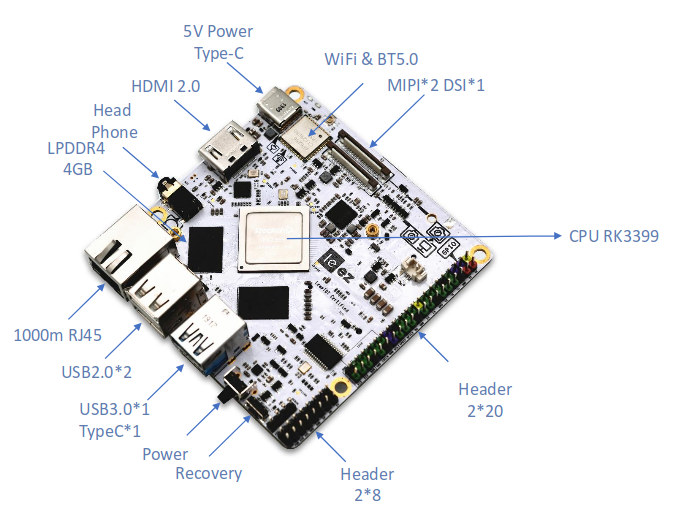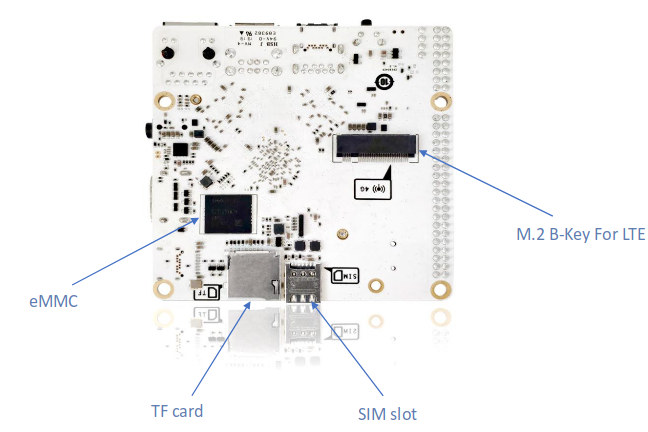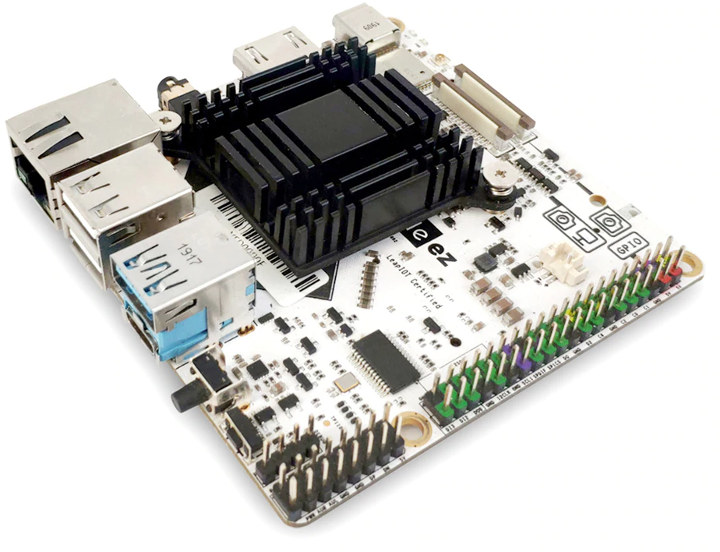It’s always interesting to look into mainline Linux changelog either to find out about new software features, but also new hardware platform. And earlier today, I wrote about Linux 5.4 release, I noticed comments about “Leez RK3399 P710 SBC“.
After searching a bit, it turns out it’s a single board computer by Lenovo, which the company apparently showcased at World Mobile Congress in Spain last February. Leez is apparently a team part of Lenovo.
 Lenovo Leez P710 board specifications:
Lenovo Leez P710 board specifications:
- SoC – Rockchip RK3399 hexa-core processor with 2x Cortex-A72 cores @ up to 2.0 GHz, 4x Cortex-A53 cores, and an Arm Mali-T860MP4 GPU
- System Memory – 2 or 4GB LPDDR4
- Storage – 16GB eMMC flash, MicroSD card slot
- Video Output – HDMI 2.0a up to 4K @ 60 Hz, 4-lane MIPI DSI, DisplayPort via USB-C port
- Audio – Audio jack + digital audio output via HDMI
- Camera I/F -2x 4-Lane MIPI-CSI
- Connectivity – Gigabit Ethernet, 802.11b/g/n/ac WiFi + Bluetooth 5.0 via Ampak AP6256 SiP, optional 4G LTE connectivity
- USB – 1x USB 3.0 port, 2x USB 2.0 port, 1x USB 3.0 Type-C port (separate from USB-C port for power)
- Expansion
- 40-pin GPIO header with 2x 3V/1.8V I2C, 1x 3V UART, 1x 3V SPI, SPDIF_TX, up to 8x 3V GPIOs, 1x 1.8V 8-channels I2S
- 8-pin header with 2x USB 2.0 host, LED, PWR, Reset, audio output
- M.2 B-key socket for 4G LTE card + SIM card slot
- Debug – 4-pin UART header
- Misc- Power key, power LED, user RGB LED
- Power Supply – 5V/3A via USB Type-C port
- Dimensions – 85×85 mm

 There’s very little info on Lenovo website, which also lists another board – Leez P515 – powered by a Texas Instruments Sitara processor. But we get many more details on Github at least for Leez P710 board. That’s where I got more detailed specifications, and we can find the firmware files and tools for the SBC such as Android 7.1 & 9.0, as well as Debian. Schematics and other resources are also available on that page.
There’s very little info on Lenovo website, which also lists another board – Leez P515 – powered by a Texas Instruments Sitara processor. But we get many more details on Github at least for Leez P710 board. That’s where I got more detailed specifications, and we can find the firmware files and tools for the SBC such as Android 7.1 & 9.0, as well as Debian. Schematics and other resources are also available on that page.
The board may target the Chinese market, but I could also notice it for sale on Aliexpress for about $140 shipped, including heatsink and WiFi antenna. You’ll also find bundles with various accessories including a debug board, camera module, 4G module, or 10.1″ touch screen display.


Jean-Luc started CNX Software in 2010 as a part-time endeavor, before quitting his job as a software engineering manager, and starting to write daily news, and reviews full time later in 2011.
Support CNX Software! Donate via cryptocurrencies, become a Patron on Patreon, or purchase goods on Amazon or Aliexpress




